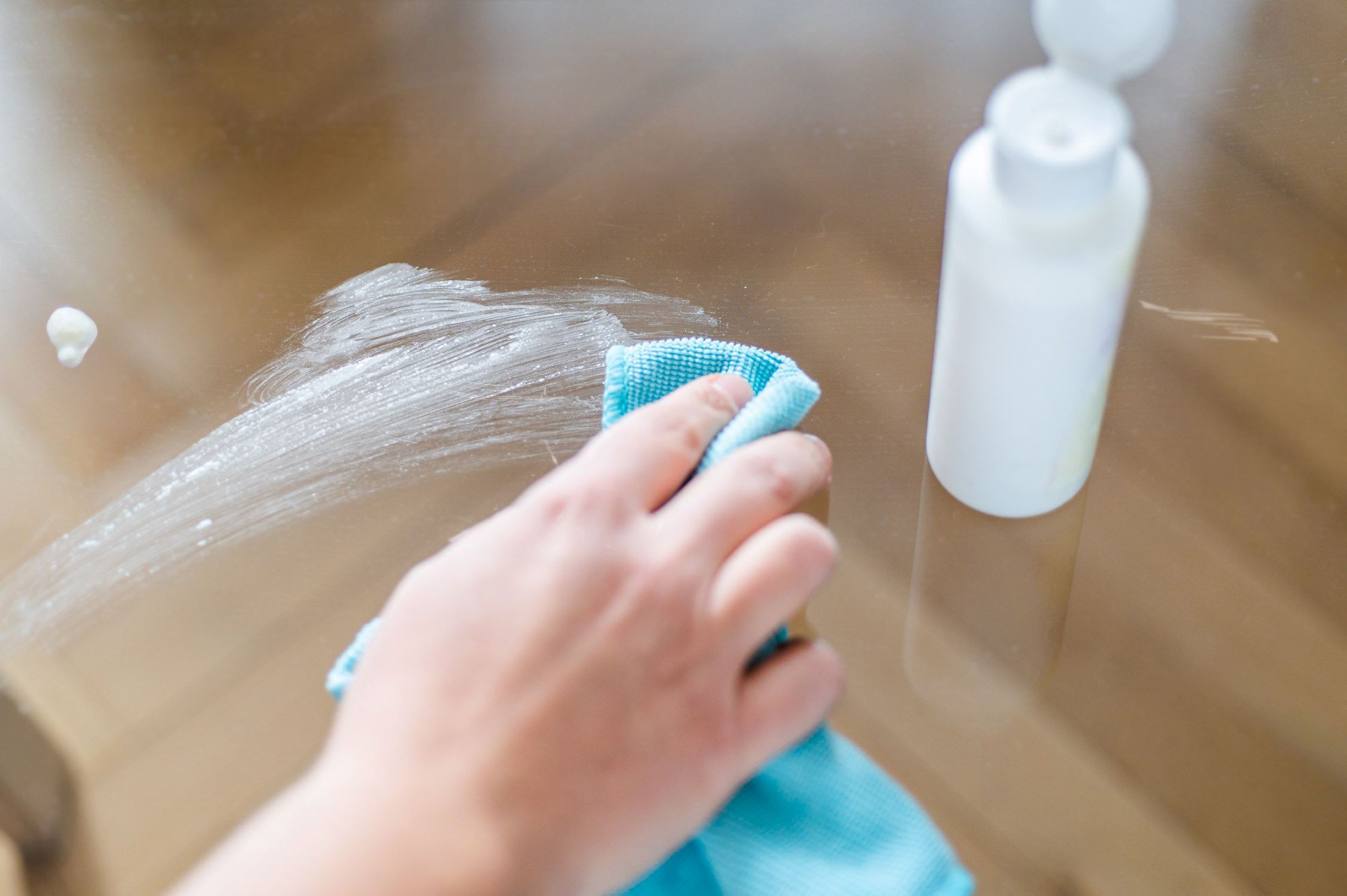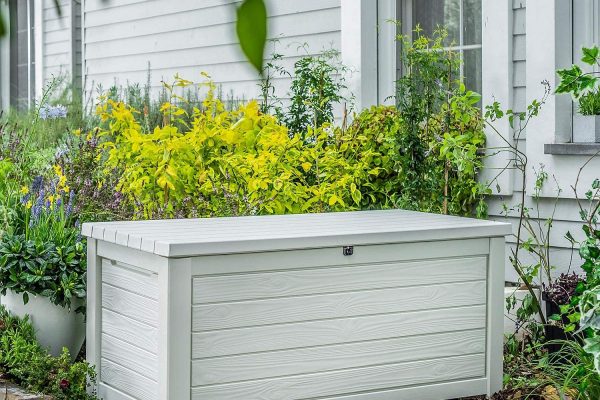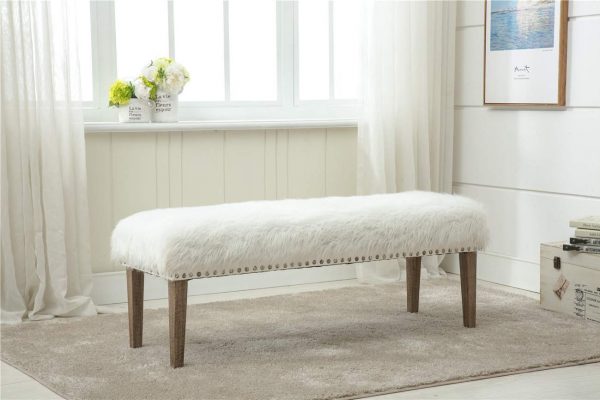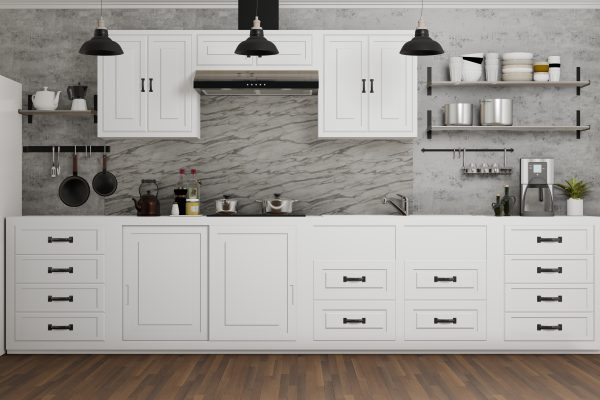Home>Furniture & Design>Interior Design Trends>How To Clean Acrylic Glass


Interior Design Trends
How To Clean Acrylic Glass
Modified: April 22, 2024
Learn the best techniques for cleaning acrylic glass and keeping up with the latest interior design trends. Keep your space looking fresh and stylish with these expert tips.
(Many of the links in this article redirect to a specific reviewed product. Your purchase of these products through affiliate links helps to generate commission for Storables.com, at no extra cost. Learn more)
Introduction
Acrylic glass, also known as plexiglass or acrylic sheet, is a versatile and popular material used in various applications, including windows, furniture, and decorative items. Its lightweight, shatter-resistant, and transparent properties make it an attractive alternative to traditional glass. However, to maintain its clarity and aesthetic appeal, regular cleaning is essential.
Cleaning acrylic glass requires a delicate touch and the right techniques to prevent scratching or clouding the surface. In this comprehensive guide, we will explore the step-by-step process of effectively cleaning and maintaining acrylic glass, ensuring that it remains pristine and free from blemishes.
Whether you have acrylic glass windows, display cases, or furniture, understanding the proper cleaning methods is crucial for preserving its visual appeal and longevity. By following the recommended cleaning procedures and utilizing the appropriate tools and materials, you can achieve sparkling, crystal-clear acrylic surfaces that enhance the overall ambiance of your space.
Now, let's delve into the world of acrylic glass cleaning and discover the best practices for keeping this versatile material looking its best.
Key Takeaways:
- Cleaning acrylic glass requires gentle techniques and specific tools. Regular dusting, using mild soap and water, and avoiding abrasive materials are essential for maintaining its clarity and visual appeal.
- To preserve acrylic glass, handle it with care, avoid direct sunlight, and use acrylic-safe cleaners. By following these tips, you can keep your acrylic glass surfaces sparkling and free from damage.
Understanding Acrylic Glass
Acrylic glass, often referred to as plexiglass, is a transparent thermoplastic that has gained widespread popularity in interior design and architectural applications. It is a lightweight and durable alternative to traditional glass, offering exceptional clarity and impact resistance. This versatile material is commonly used for windows, skylights, display cases, furniture, and various decorative elements due to its optical properties and ease of fabrication.
One of the primary advantages of acrylic glass is its remarkable clarity, allowing for unobstructed views and the transmission of natural light. Unlike traditional glass, acrylic glass is less prone to shattering, making it a safer option for environments where impact resistance is a concern. Additionally, acrylic glass is available in a range of thicknesses, offering flexibility in design and application.
Acrylic glass is also known for its UV resistance, making it suitable for both indoor and outdoor use. This property ensures that the material does not yellow or degrade when exposed to sunlight, maintaining its visual appeal over time. Furthermore, acrylic glass can be easily shaped, molded, and fabricated into various forms, allowing for creative and innovative design possibilities.
When it comes to cleaning and maintenance, understanding the unique properties of acrylic glass is crucial. Unlike traditional glass, acrylic is more susceptible to scratching, requiring gentle handling and non-abrasive cleaning methods. Additionally, using the wrong cleaning products can result in clouding or damage to the surface, emphasizing the need for proper care and maintenance.
In summary, acrylic glass is a versatile and visually appealing material that has become a staple in modern interior design. Its exceptional clarity, impact resistance, UV stability, and flexibility make it an ideal choice for a wide range of applications. By understanding the distinct characteristics of acrylic glass, individuals can make informed decisions regarding its use, care, and maintenance, ensuring that it continues to enhance the aesthetic appeal of interior spaces for years to come.
Tools and Materials Needed
Cleaning acrylic glass effectively requires the use of specific tools and materials to ensure a thorough and gentle cleaning process. Here's a comprehensive list of what you'll need:
Tools:
- Soft, Lint-Free Microfiber Cloth: Choose a high-quality microfiber cloth to avoid scratching the acrylic surface. The cloth should be clean and free of any debris or abrasive particles.
- Mild Dish Soap: Opt for a gentle, non-abrasive dish soap that is free from harsh chemicals or additives. This will be used to create a cleaning solution for the acrylic glass.
- Distilled Water: Using distilled water helps prevent streaking and water spots, ensuring a pristine finish after cleaning.
- Spray Bottle: A clean spray bottle will be used to dispense the cleaning solution onto the acrylic surface, facilitating an even application.
- Soft Brush or Blower: A soft brush or blower can be used to remove loose dust and debris from crevices and hard-to-reach areas without causing damage to the acrylic.
Materials:
- Mild Dish Soap: As mentioned above, a mild dish soap is essential for creating a gentle cleaning solution that effectively removes dirt and grime without harming the acrylic surface.
- Distilled Water: Distilled water is preferred for its purity, preventing mineral deposits and streaking during the cleaning process.
- Acrylic-Safe Cleaner (Optional): If preferred, an acrylic-safe cleaner specifically formulated for cleaning acrylic glass can be used in place of a homemade cleaning solution. Ensure that the cleaner is free from ammonia, alcohol, or abrasive ingredients.
- Acrylic Polish (Optional): For an added layer of protection and shine, an acrylic polish can be used to buff the surface after cleaning, enhancing its clarity and luster.
By gathering these tools and materials, you'll be well-equipped to carry out the cleaning process with precision and care, ensuring that your acrylic glass surfaces remain pristine and free from damage.
Step 1: Dusting and Removing Debris
Before delving into the cleaning process, it's crucial to start with a thorough dusting and removal of debris from the acrylic glass surface. This initial step helps prevent scratching and ensures that the subsequent cleaning actions are more effective.
Begin by using a soft, lint-free microfiber cloth to gently wipe the surface of the acrylic glass. The cloth should be clean and free of any abrasive particles that could potentially scratch the material. Lightly glide the cloth across the surface, applying minimal pressure to avoid causing damage.
For hard-to-reach areas and crevices, a soft brush or blower can be utilized to dislodge any accumulated dust and debris without risking scratches. By employing a gentle brushing or blowing motion, loose particles can be effectively removed, preparing the surface for the next stage of cleaning.
It's essential to approach this step with patience and attention to detail, ensuring that all visible dust and debris are thoroughly eliminated. By taking the time to meticulously remove any loose particles, you set the stage for a more successful and blemish-free cleaning process.
By diligently executing the dusting and debris removal process, you pave the way for the subsequent cleaning steps to yield optimal results. This meticulous approach sets the foundation for maintaining the pristine appearance of your acrylic glass surfaces, allowing them to showcase their inherent clarity and visual appeal.
Remember, the key to effective dusting and debris removal lies in gentle and deliberate actions, prioritizing the preservation of the acrylic glass surface while preparing it for the subsequent cleaning stages. With this foundational step completed, you are now ready to proceed to the next phase of the cleaning process, ensuring that your acrylic glass surfaces remain immaculate and free from unsightly blemishes.
Step 2: Cleaning with Mild Soap and Water
After completing the initial dusting and debris removal, the next crucial step in cleaning acrylic glass involves the use of a gentle cleaning solution comprised of mild soap and distilled water. This method effectively eliminates dirt, grime, and smudges without compromising the integrity of the acrylic surface.
To begin, prepare the cleaning solution by mixing a small amount of mild dish soap with distilled water in a clean spray bottle. It is important to use a mild dish soap that is free from harsh chemicals or additives, as these can potentially damage the acrylic glass. The goal is to create a gentle yet effective cleaning solution that is safe for the material.
Once the cleaning solution is ready, lightly mist the acrylic glass surface with the solution, ensuring even coverage. Avoid oversaturating the surface, as excessive moisture can lead to streaking and water spots. Using a soft, lint-free microfiber cloth, gently wipe the surface in a circular motion, working from one end to the other. This method helps dislodge and lift away dirt and smudges while minimizing the risk of scratching the acrylic.
It is important to exercise caution and avoid applying excessive pressure during the cleaning process, as acrylic glass is more susceptible to scratching than traditional glass. By maintaining a gentle touch and using smooth, circular motions, you can effectively remove stubborn stains and blemishes without compromising the clarity of the material.
For areas with particularly stubborn residue, such as dried-on spills or fingerprints, a second round of cleaning may be necessary. In such cases, it is advisable to repeat the misting and wiping process with the cleaning solution, ensuring thorough coverage and attention to detail.
After completing the cleaning process, inspect the acrylic glass surface to ensure that all dirt and smudges have been effectively removed. Any remaining streaks or spots can be addressed by lightly misting the surface with distilled water and gently buffing it with a clean, dry microfiber cloth.
By following these meticulous yet straightforward steps, you can achieve a sparkling, crystal-clear finish on your acrylic glass surfaces, enhancing their visual appeal and maintaining their pristine condition.
This gentle and effective cleaning method ensures that your acrylic glass remains free from blemishes and maintains its inherent clarity, allowing it to continue enhancing the aesthetic appeal of your interior spaces.
Step 3: Drying and Polishing
After the meticulous cleaning process, the final step in maintaining the pristine appearance of acrylic glass involves thorough drying and optional polishing. This critical stage ensures that the surface is free from moisture and streaks, while also enhancing its luster and clarity.
To begin, use a clean, dry microfiber cloth to gently pat the acrylic glass surface, absorbing any residual moisture left from the cleaning process. It is essential to use a lint-free cloth to prevent lint or fibers from adhering to the surface, which could detract from its flawless appearance. By carefully patting the surface, you facilitate the evaporation of any remaining water, leaving the acrylic glass impeccably dry and free from streaks.
Once the surface is completely dry, the optional step of polishing can be undertaken to further enhance the clarity and shine of the acrylic glass. If desired, an acrylic polish specifically formulated for use on acrylic surfaces can be applied according to the manufacturer's instructions. Using a separate clean microfiber cloth, apply a small amount of the polish in circular motions, working it into the surface to achieve a uniform finish.
The polishing process not only adds an extra layer of protection to the acrylic glass but also helps to minimize the visibility of fine scratches and imperfections, resulting in a more polished and refined appearance. By gently buffing the surface with the polish, you can elevate the visual appeal of the acrylic glass, allowing it to radiate with exceptional clarity and brilliance.
Upon completing the drying and optional polishing process, take a moment to admire the immaculate finish of the acrylic glass. The surface should now exude a captivating luster, free from streaks, water spots, and blemishes. This meticulous approach to drying and polishing ensures that the inherent beauty of the acrylic glass is fully realized, elevating the overall aesthetic of the space it inhabits.
By adhering to these detailed steps, you can effectively preserve the pristine condition of your acrylic glass surfaces, allowing them to maintain their visual allure and contribute to the ambiance of your interior environment. With the drying and optional polishing process completed, your acrylic glass surfaces are now ready to captivate with their radiant clarity and flawless appearance.
Additional Tips for Maintenance
In addition to the fundamental cleaning process outlined above, several additional tips and best practices can further contribute to the long-term maintenance and preservation of acrylic glass surfaces. By incorporating these strategies into your regular maintenance routine, you can ensure that your acrylic glass continues to exude clarity and visual appeal for years to come.
1. Avoid Abrasive Materials:
When cleaning or maintaining acrylic glass, it is crucial to steer clear of abrasive materials such as rough sponges, scouring pads, or harsh cleaning chemicals. These abrasive substances can cause micro-scratches and clouding, diminishing the transparency and aesthetic quality of the acrylic surface. Opt for soft, non-abrasive cleaning tools and gentle cleaning solutions to safeguard the integrity of the material.
2. Regular Dusting:
Implement a regular dusting regimen to prevent the accumulation of debris and particles on the acrylic glass surface. Using a soft, lint-free microfiber cloth, gently dust the surface to remove any loose particles that could potentially cause scratches during cleaning. By incorporating regular dusting into your maintenance routine, you can minimize the need for more intensive cleaning and preserve the pristine appearance of the acrylic glass.
3. Protective Handling:
Exercise caution when handling and moving objects in close proximity to acrylic glass surfaces. Avoid placing sharp or abrasive items directly onto the acrylic, as these can cause scratches or surface damage. Additionally, consider using protective pads or coasters to prevent direct contact between objects and the acrylic surface, reducing the risk of inadvertent damage.
4. Avoid Direct Sunlight:
While acrylic glass is UV-resistant, prolonged exposure to direct sunlight can still lead to gradual degradation and yellowing over time. Whenever possible, minimize direct sunlight exposure to maintain the material's clarity and longevity. Utilize window treatments or UV-protective films to shield acrylic glass from excessive sunlight, preserving its pristine appearance.
5. Use Acrylic-Safe Cleaners:
If opting for commercial cleaners, ensure that they are specifically formulated for use on acrylic surfaces. These acrylic-safe cleaners are designed to effectively remove dirt and grime without compromising the material's integrity. Always follow the manufacturer's instructions when using specialized acrylic cleaners to achieve optimal results.
By integrating these additional maintenance tips into your cleaning and care routine, you can uphold the impeccable condition of your acrylic glass surfaces, allowing them to continue enhancing the aesthetic appeal of your interior spaces. With a proactive approach to maintenance and preservation, your acrylic glass will remain a captivating and enduring feature within your design environment.
Conclusion
In conclusion, the proper cleaning and maintenance of acrylic glass are essential for preserving its pristine appearance and ensuring its longevity in interior design applications. By understanding the unique properties of acrylic glass and employing the recommended cleaning techniques, individuals can uphold the material's exceptional clarity and visual appeal.
Through the meticulous process of dusting and removing debris, followed by the gentle cleaning with a mild soap and water solution, acrylic glass surfaces can be restored to their sparkling, crystal-clear state. The careful drying and optional polishing further elevate the material's luster, allowing it to radiate with exceptional brilliance.
In addition to the fundamental cleaning process, incorporating best practices for maintenance, such as avoiding abrasive materials, regular dusting, protective handling, minimizing direct sunlight exposure, and using acrylic-safe cleaners, can significantly contribute to the long-term preservation of acrylic glass surfaces.
By adhering to these comprehensive cleaning and maintenance guidelines, individuals can ensure that their acrylic glass windows, display cases, furniture, and decorative elements continue to enhance the aesthetic appeal of interior spaces. The enduring clarity, impact resistance, and UV stability of acrylic glass make it a valuable asset in modern design, and by maintaining its pristine condition, its visual allure can be fully realized.
Ultimately, the proper care and maintenance of acrylic glass not only contribute to the material's longevity but also uphold its inherent beauty, allowing it to remain a captivating and enduring feature within interior environments. With a proactive approach to cleaning and maintenance, acrylic glass surfaces can continue to exude clarity, brilliance, and visual allure, enriching the ambiance of any space they adorn.
Frequently Asked Questions about How To Clean Acrylic Glass
Was this page helpful?
At Storables.com, we guarantee accurate and reliable information. Our content, validated by Expert Board Contributors, is crafted following stringent Editorial Policies. We're committed to providing you with well-researched, expert-backed insights for all your informational needs.













0 thoughts on “How To Clean Acrylic Glass”